Mexican candied pumpkin, or calabaza en tacha, is one of the best fall desserts to enjoy as a merienda or snack. A fairytale pumpkin is cut into thick wedges and simmered slowly in piloncillo, cinnamon, clove, and orange peel. Once the pumpkin is soft and tender, it is drizzled in its own syrup. Traditionally it is served with milk, but this version is topped with decadent coconut whipped cream.
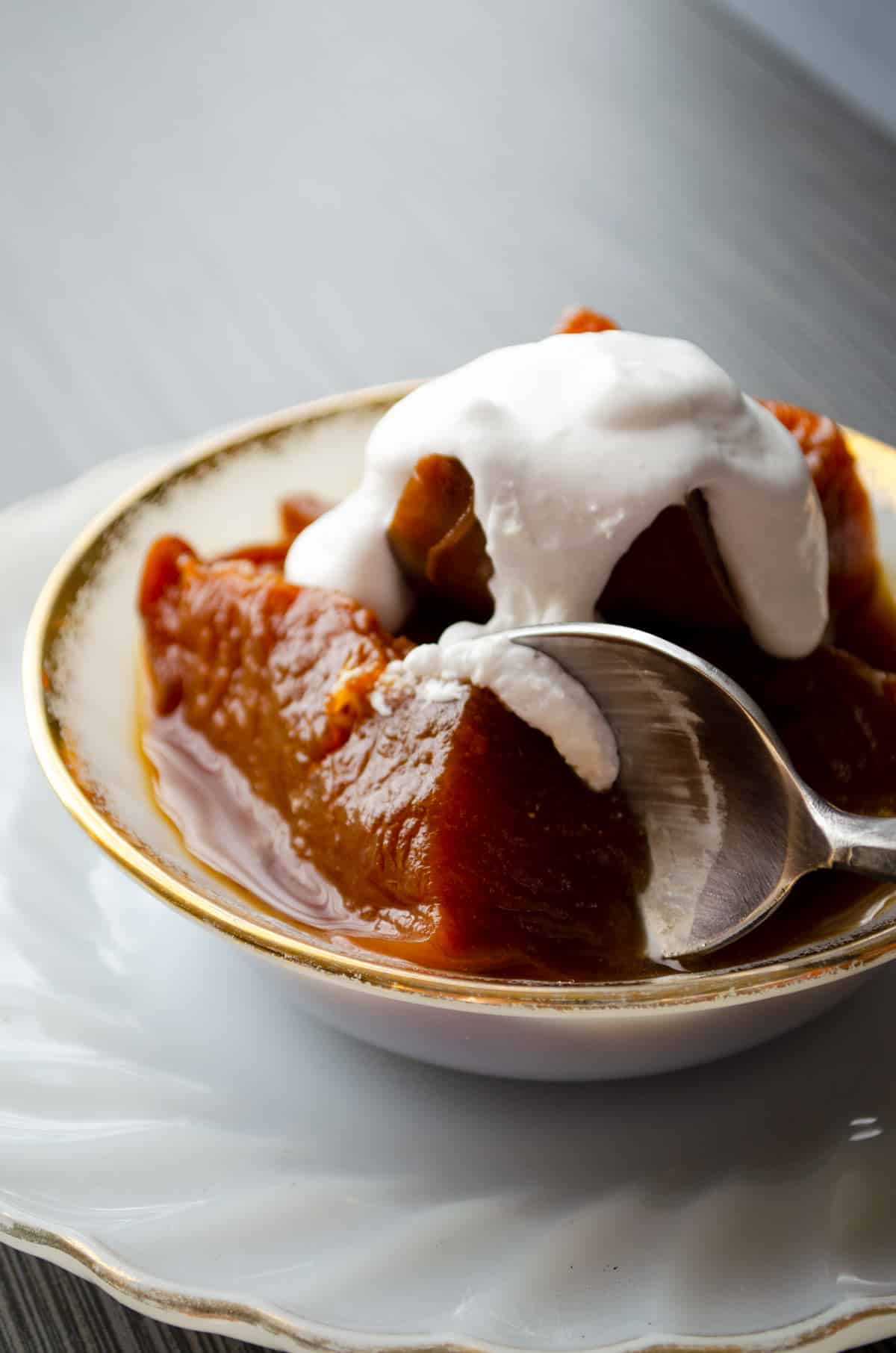
Jump to:
What Makes This Recipe Great
This recipe is a great way to use the amazing varieties of pumpkin available at your local market or grocery store. You can eat the pumpkin in pieces or you could puree it to make a pumpkin pie or empanadas. This recipe is vegan, gluten-free, and dairy-free.
A History
In Mexico, this traditional dessert is placed on the altar, or the ofrenda, for Dia de Los Muertos for the loved ones who return to earth from the afterlife. This candied pumpkin dish is similar to American candied yams.
Dating back to colonial times, originally Calabaza en Tacha was made in the sugar mills, where the pumpkin would be placed into a tompeate or palm leaf basket and then placed in the cauldrons where sugar was boiled.
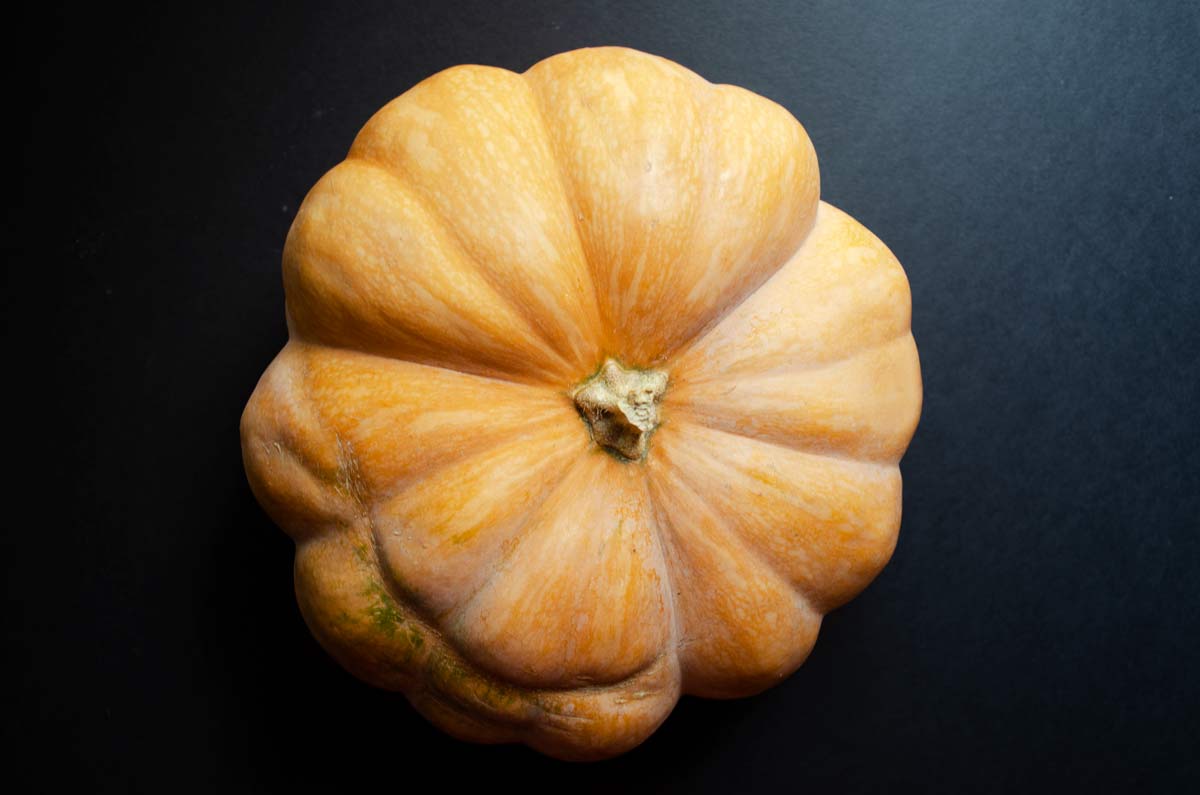
Ingredients
Pumpkin: I have used Cinderella or Fairytale pumpkin for this recipe with good results. Fairytale pumpkin is really similar to the Calabaza de Castilla used in Mexico, but Cinderella pumpkin will work as well. When selecting a pumpkin for cooking the best way to choose one is by weight. You want a heavier pumpkin for its size, better flavor, and quantity of flesh.
Whole pumpkins can be kept in a dark, well-ventilated space for months. To prevent cut pumpkin from drying out it should be wrapped in plastic and stored in the refrigerator where it can be kept for up to 4 days.
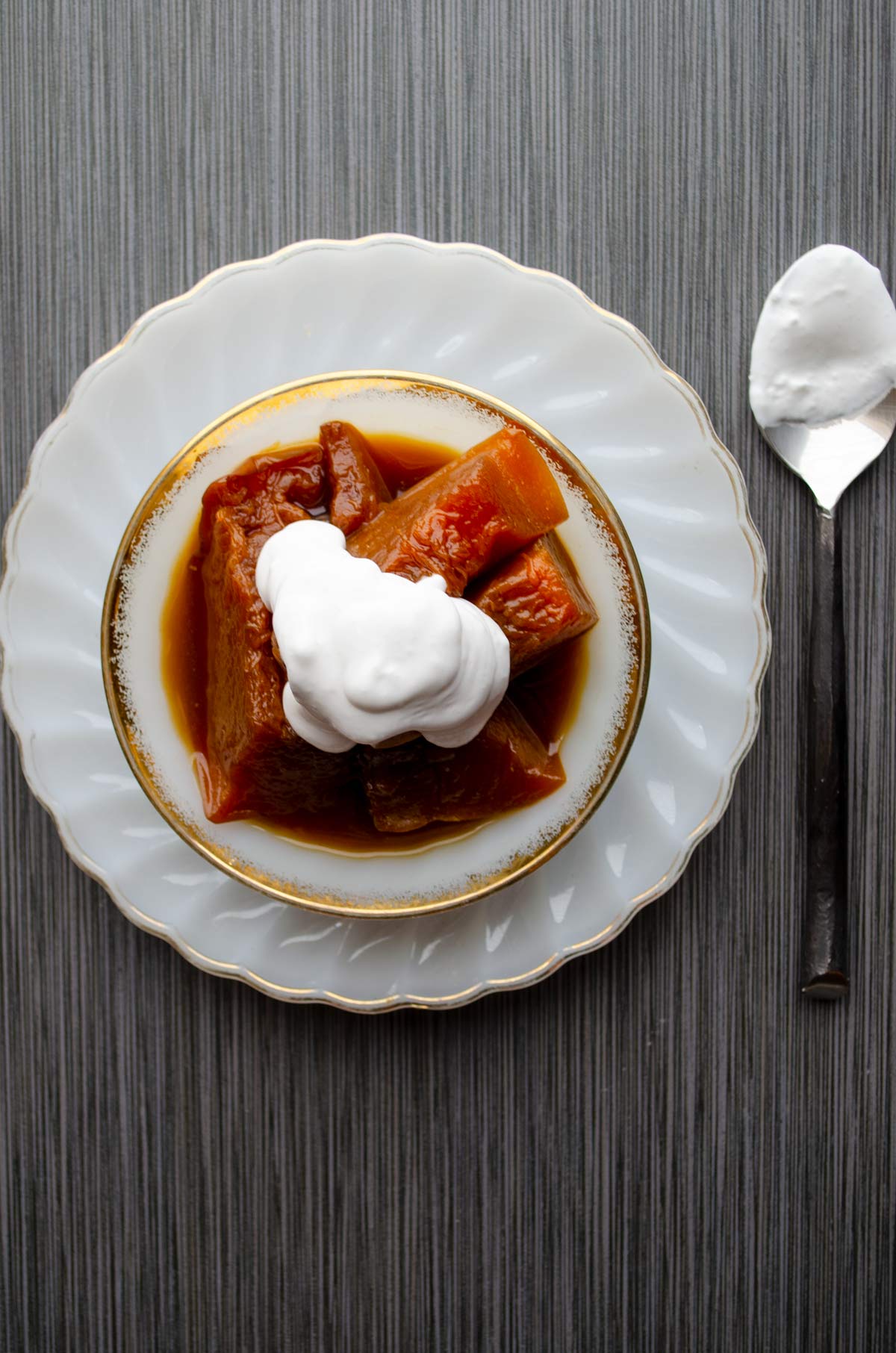
Piloncillo: are cones of unrefined sugar you can usually find in your grocery store in the Mexican section. It goes by many names; rapadura, raspadura, panela, jaggery, chancaca in Chile and Peru. If you can't find any in your area you can find some online.
Ceylon Cinnamon: Ceylon cinnamon is also known as Mexican cinnamon, it is milder, lighter in color, and more brittle than Cassia Cinnamon. It can usually be found in the Mexican spice section of your grocery store, but if you can't find it here is some true Mexican Ceylon.
How to Make Mexican Candied Pumpkin
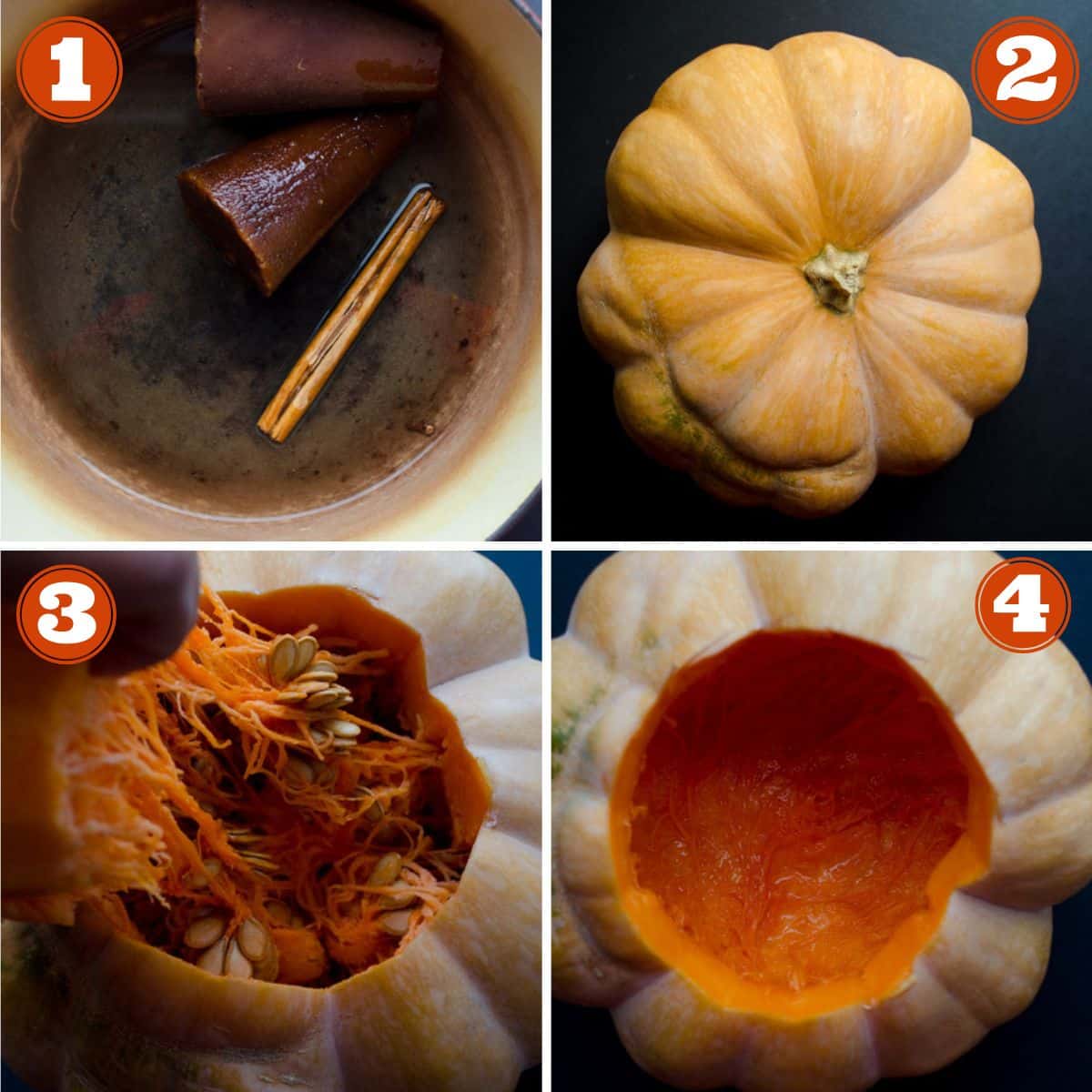
- Place the piloncillo, water, cinnamon, clove, and orange peel in a large pot or dutch oven set to low heat. Let the piloncillo slowly dissolve, stir frequently.
- Wash and clean the pumpkin and cut off the top.
- Scoop out the seeds.
- Remove the stringy pulp.
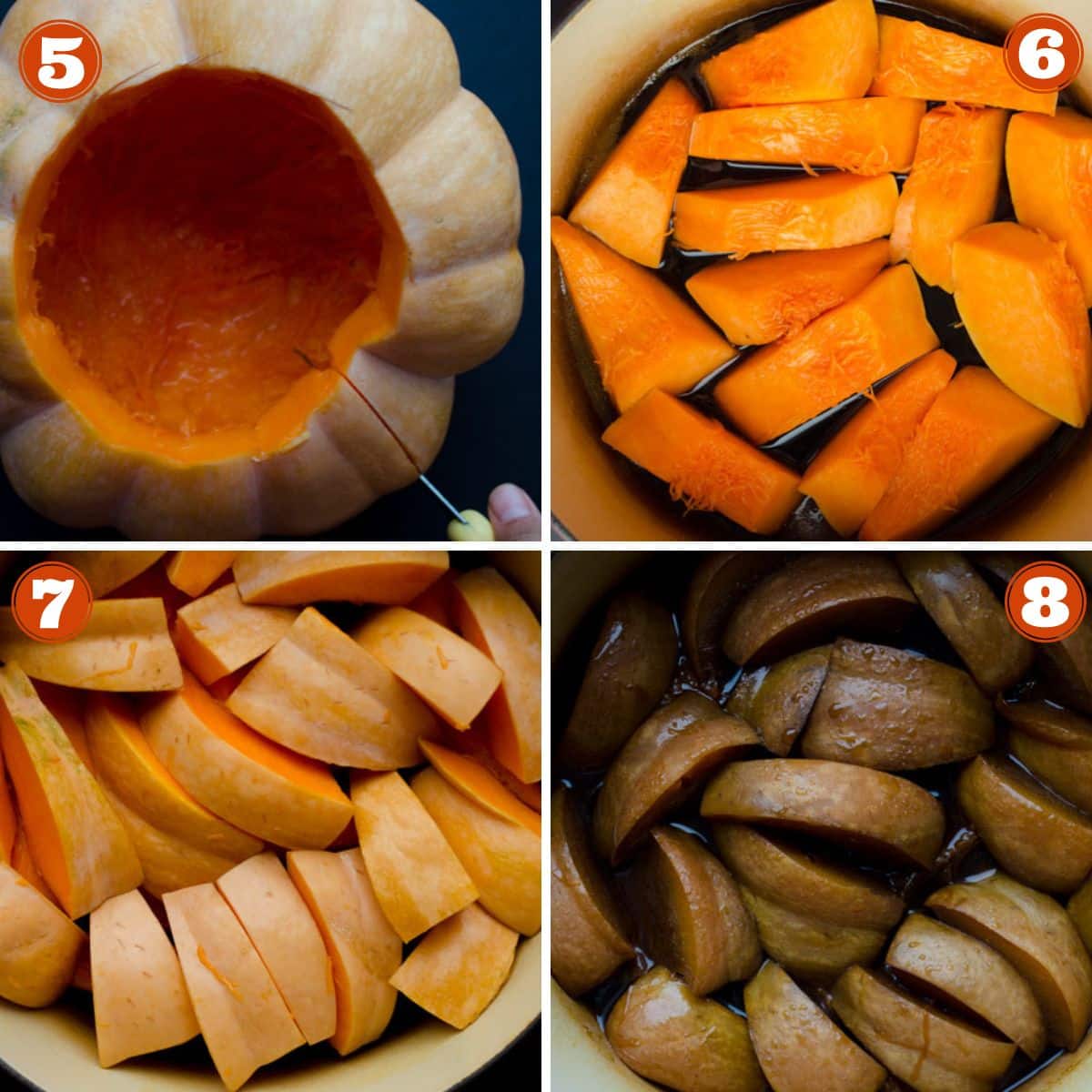
5. Cut into wedges following the lines on the pumpkin.
6. Arrange the pumpkin slices skin side down in the pot.
7. Place another layer on top flesh side down, so that the pumpkin is arranged flesh to flesh. Cover and bring to a simmer and cook until the pumpkin is tender.
8. Remove from the heat and let cool.
Expert Tricks and Tips
What to do with all the pumpkin seeds? In some regions of Mexico, the pumpkin seeds are not removed before cooking, so you end up with candied pumpkin seeds as well as pumpkin slices.
If you do remove them the pumpkin seeds, or pepitas, can be roasted and enjoyed by themselves as a snack or in salads. Pepitas are a great source of magnesium and Omega 3. Try this recipe for Pipian Rojo Over Rice to use up your pumpkin seeds.
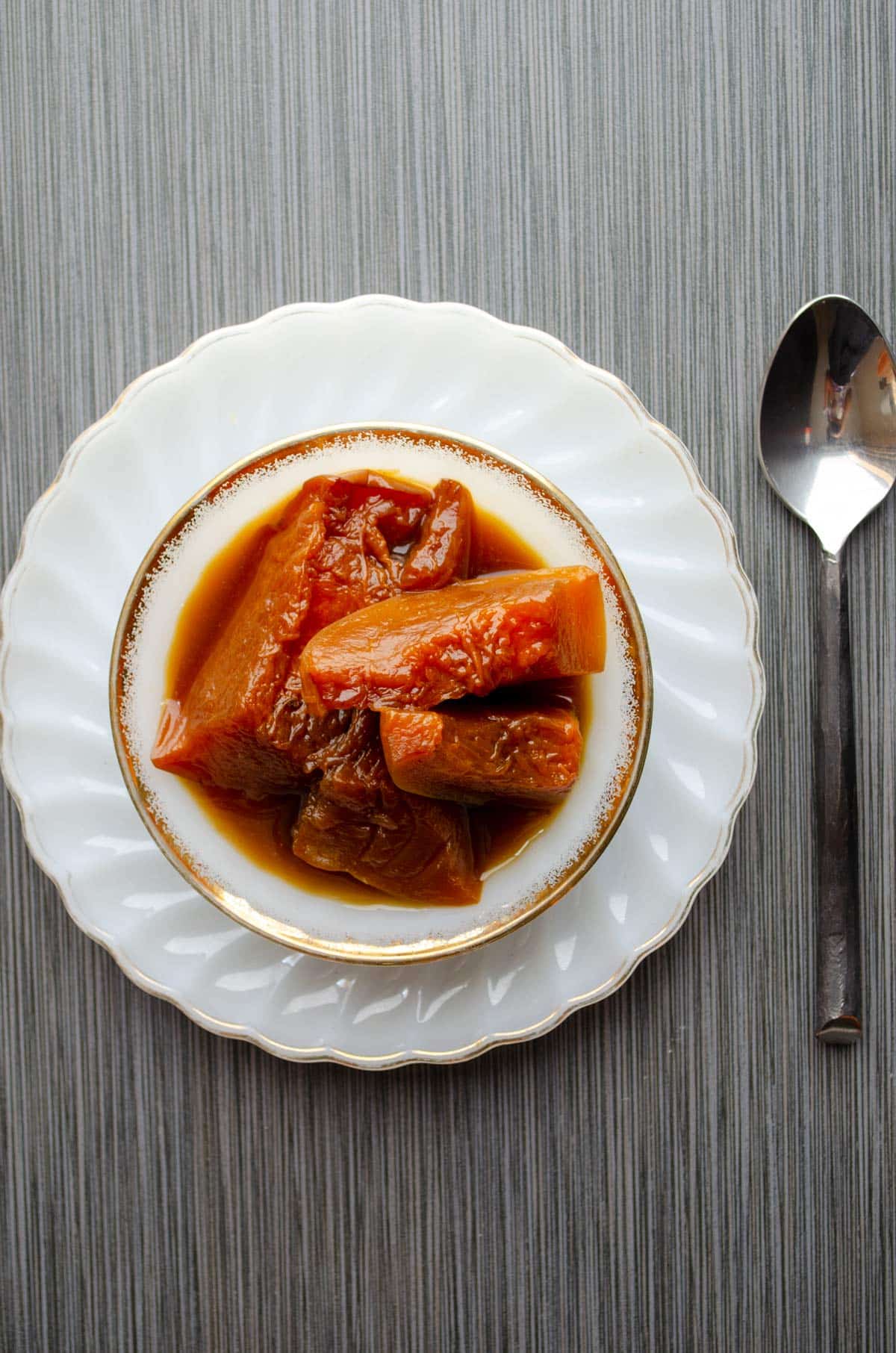
Serving
You can enjoy this hot or cold. Traditionally it is served hot with a splash of cold milk, but I like to eat it cold with coconut whipped cream.
Storing
If you have leftovers you can store them in the fridge for up to three days in an airtight container. You can also freeze it for up to 3 months.
FAQ
Calabaza is the Spanish word for pumpkin. Typically calabaza is referring to the variety of winter squash grown in the West Indies.
Ceylon cinnamon has a sweeter, more delicate flavor than Cassia (regular) cinnamon. Ceylon cinnamon also has been proven to be beneficial for liver health.
More Vegan Mexican Dessert Recipes
Candied Pumpkin (Calabaza en Tacha)
Ingredients
- 1 small (4 -5 lbs.) Cinderella or fairytale pumpkin
- 1 lb. Piloncillo (2 cones)
- 1 Ceylon cinnamon stick
- 1 Clove whole
- 1 strip Orange peel
- ¾ cup Water
Serve:
- 1 cup Coconut whipped cream
- 1 cup Almond milk
Instructions
- Place the piloncillo, water, cinnamon, clove, and orange peel in a large pot or dutch oven set to low heat. Let the piloncillo slowly dissolve, stir frequently.
- In the meantime, rinse the pumpkin well to remove any dirt. With a small knife cut a circle around the stem of the pumpkin. Almost like you are carving a jack-o-lantern. Remove the stem and pull out the seeds and flesh attached to it. Leave the rest if the seeds and flesh inside.
- Following the natural vertical grooves of the pumpkin, cut it into wedges from top to bottom. The wedges should be about 2 ½ “ wide x 3 “ long. You do not need to remove the seeds, but you can if desired. Score the skin of the pumpkin wedges with a small knife to help them absorb the syrup.
- Once the piloncillo has completely dissolved, remove the pot from the heat and layer the pumpkin wedges skin side down on the bottom of the pot. Once you have covered the bottom of the pot completely, add a second layer of pumpkin wedges flesh side down, so that the pumpkin is touching flesh to flesh.
- Cover the pot and set it to medium- low heat. Let the pumpkin simmer for 1 hour. Don’t worry about not having enough liquid in the pot. As the pumpkin cooks it will release a large quantity of water.
- Check your pumpkin, if it soft and the color is brown from the piloncillo your pumpkin is done. If it is not completely soft, cook for an additional 1/2 an hour.
- Take off the heat and let cool.
- Serve hot with a splash of milk or cold with coconut whipped cream.
Video
Notes
- You can enjoy this hot or cold. Traditionally it is served hot with a splash of cold milk, but I like to eat it cold with coconut whipped cream.
- If you have leftovers you can store them in the fridge for up to three days in an airtight container. You can also freeze it for up to 3 months.
Nutrition
Although dorastable.com attempts to provide accurate nutritional information, these figures should be considered estimates.


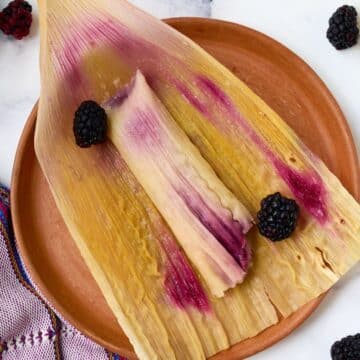
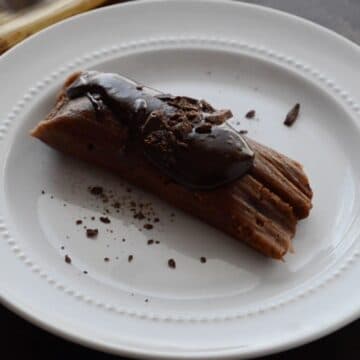

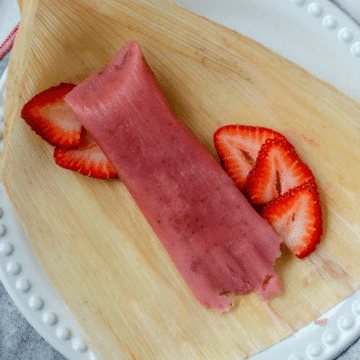
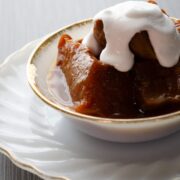

This is just beautiful! That's my favorite kind of pumpkin. When I was raising my kids and husband, I was basically a short order cook, serving everyone's dietary desires. I don't know if there's a way around it. But it's work!
I know what you mean! I try to avoid that as much as possible, but sometimes it inevitable.
It may be a silly question but do you eat the rind?
It's not a silly question at all. You can eat the rind. After it simmers for so long it is very soft.